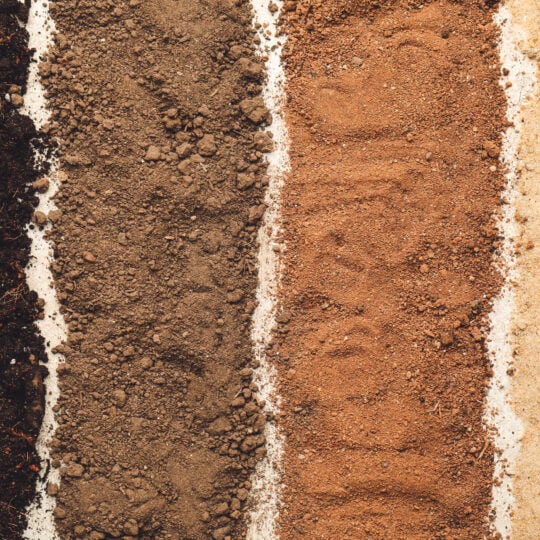What the Color of Your Soil Is Telling You

When you think about the health of your lawn, you probably first look at the color of your grass. Maybe you also check to see if there are weeds.
Did you know you might need to dig even deeper to analyze your lawn? It’s time to pull out your shovel.
Learn what the color of your soil is telling you.
What the Color of Your Soil Is Telling You
Soil color is determined by the proportion of organic matter content and minerals found. Many people have a variety of colors present. Dig deeper, and you will likely find layers of colors.
Dark: This is the soil you are likely most familiar with. When you buy soil from the store to help with gardening, you’ll pick up a bag of dark soil. This color is caused by organic matter.
Red: Red soil is caused by clay minerals, which release aluminum and iron oxides. This color is often found in hot climates, and it indicates good drainage and aeration.
Yellow-brown and orange: This can be because of goethite that’s bound to clay and organic matter. It’s similar to red soil, however, the yellowish-brown and orange colors are found where there is more moisture.
Marbled: This clay-like soil is often found in oxidized conditions and areas that are waterlogged for part of the year.
Soil color comes down to a very specific science. USDA Natural Resources Conservation Service Soils goes into great detail about what affects the coloring.
Your Green Lawn Is a Phone Call Away.
We know just what your soil color means for your lawn and the unique needs it has. We carefully designed our lawn care programs, like our Fertilizing and Weed Control Service, for our neighbors in Pennsylvania, New Jersey, and Delaware. This lawn care plan includes eight applications throughout the year so your yard is healthy year-round and set up for success.
Contact us today for a free consultation to help your lawn reach its full potential.